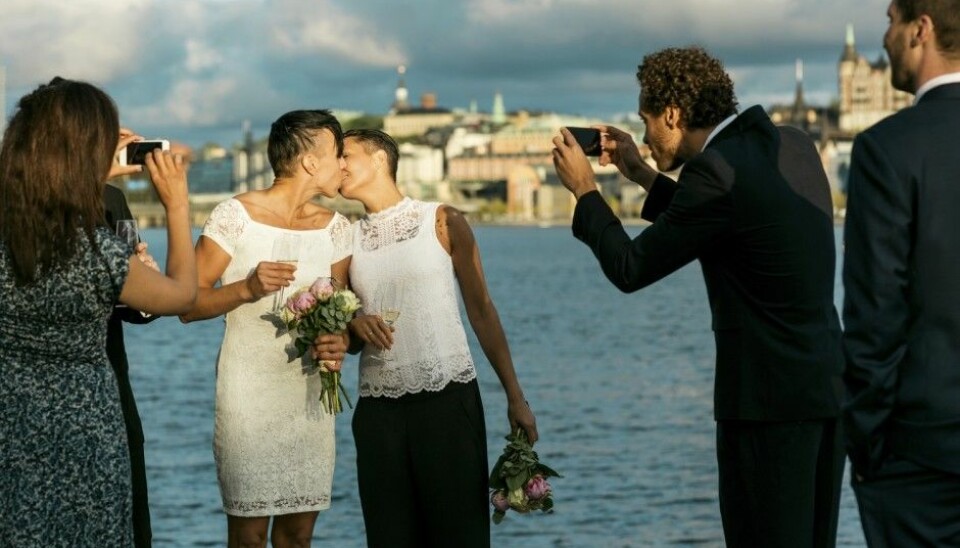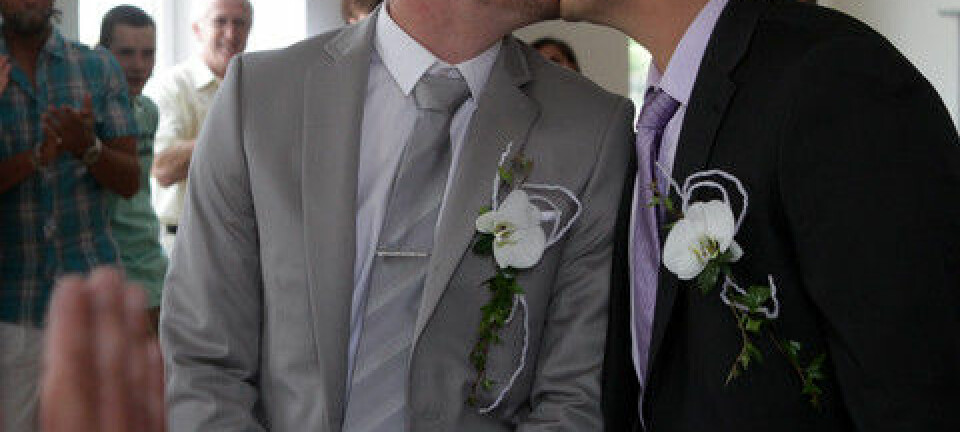
Same-sex marriages are on the rise in Norway
Most of the same-sex marriages in Norway are between women. But lesbian marriages are more likely to end up in divorce than ones between men or between men and women.
After the Norway's Marriage Act made same-sex marriages legal in 2009, twice as many persons have formalised relationships with a partner of their own gender compared to the numbers in 1993 when lesbians and gay men were first allowed to register as partners.
In Norway same-sex couples have been allowed to register as legal partners since 1993, with the same rights and duties as couples in a marriage. A registered partnership is still an option for both homosexual and heterosexual couples, but many gays and lesbians now prefer to tie the knot as married couples.
Women represent the lion’s share of the increase in same-sex marriages, according to a study by Statistics Norway. It followed the marital and partnership status of couples up to 2011.
Back in 1993 gay men dominated with the majority of formalised same-sex partnerships in Norway. Last year, six out of ten same-sex marriages were among women.
The ranks of registered male couples have remained fairly stable, while the number of registered lesbian couples has increased. The same tendency has been seen in Sweden and Denmark.
Nearly 1,900 persons of the same sex in Norway wed from 2009 (when the Marriage Act was amended) until 2015. After the revised Marriage Act came into effect there have been about 270 gay and lesbian marriages per year, as compared to an average of 127 formalised same-sex partnerships entered per year from 1993 to 2009. So this is still a small number – less than one percent of all the marriages and registered partnerships entered in Norway in these years were among couples of the same sex.
More often with children
“We know that many women enter wedlock because they are having children together,” says Ingvild Endestad.
She leads the organisation Fri – the Norwegian Association for Gender and Sexual Diversity.
Endestad thinks children are one of the reasons why a mounting number of lesbians are marrying.
Of course, female couples now have children much more frequently than they used to. Their right to be considered for assisted conception was granted along with the Marriage Act of 2009. Now, 30 percent have children together, as opposed to 72 percent among heterosexual married couples and 3 percent of gay male married couples.
“Certain parental rights follow automatically with marriage. For instance, it is easier for non-biological parents to be given formal parental rights,” explains Endestad.
International marriages
A total of 754 partners converted their registered partnership to marriage in the first three years after the Marriage Act revision. This amounts to over a third of registered same-sex partnerships that were still intact. Most of these marriages were in the first year.
These married couples are on average younger than the gay/lesbian couples who continued as registered partners. An “upgrade” from partnership to marriage is mainly symbolic, as in Norway there is no legal difference, whether couples are gay or straight, between marriage and registered partnership.
Here too, female couples were more prone to opt for marriage. Nearly half of lesbian partnerships were converted to marriages once the opportunity arose.
The biggest statistical difference in Norway between male and female homosexuals regarding conversion of partnerships to marriages appears to be associated with nationality. In nearly half of the partnerships between gay men, at least one of the men has foreign citizenship. The study does not suggest an answer to why such “international” couples are less likely to opt for marriage.
Age protects against divorce
The same-sex newlyweds in Norway are on average older than their more traditional male-female counterparts. Nearly one third were over the age of 40 when they wed. Female couples were generally younger than males, about a third were under the age of 31.
Same-sex couples generally have more education than hetero couples, especially female couples. Both genders of same-sex couples are more likely to live in the Oslo area, even though a growing number of gay male couples now live outside the capital.
Another distinction is the greater age gap among male couples. About 40 percent are comprised of men who are over nine years apart in age, as compared to about 15 percent with this large an age gap among lesbian couples and heterosexual couples.
Same-sex couples are also more likely to split up than heterosexual couples. By 2011, some 22 percent of the married or registered gay and lesbian partners went separate ways.
This applies to the homosexual women in particular, as their risk of divorce is twice that of hetero-married women.
But there are certain characteristics which appear to protect against divorce. Couples of roughly the same age who were a little older when they wed have a greater chance of sticking together. Another cohesive factor is when one or both the partners have completed a higher education.
Yet another stabilizing factor is when both are Norwegian citizens or they have children together. But having children from a previous relationship has the opposite effect – raising the chances of divorce.
Lesbians divorce the most
The researchers have found no changes in the risk of divorce in recent years. They have researched this earlier and thought that as female couples are having children together more frequently this is contributing to the stability of their relationship. But lesbians continue to split up at a rate that outpaces gay male and heterosexual married couples.
Other research has suggested that a higher rate of divorce among same-sex couples can be linked to a greater lack of social support for such cohabitation and marriage. They might receive less encouragement from those around them which helps to persevere through a rocky relationship.
However, the researchers think that if this were a key factor, the share of gay and lesbian divorces should be on the decline, as Norwegian society has become much more accepting. But these break-ups are not dropping and the reason why lesbians continue to divorce more frequently remains a mystery.
--------------------------------------
Read the Norwegian version of this article at forskning.no
Translated by: Glenn Ostling
































